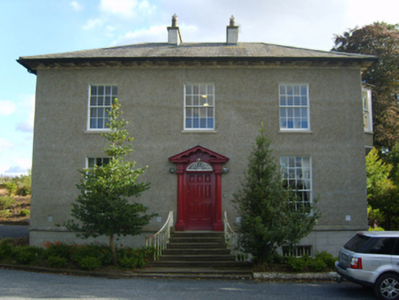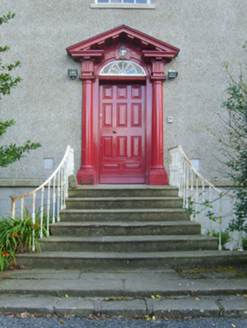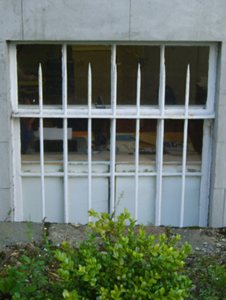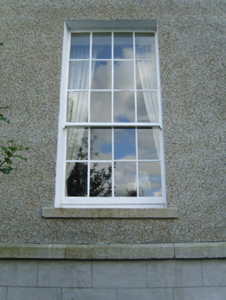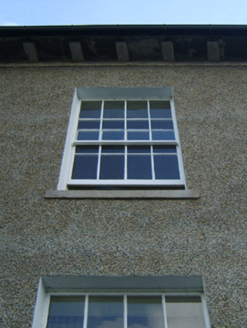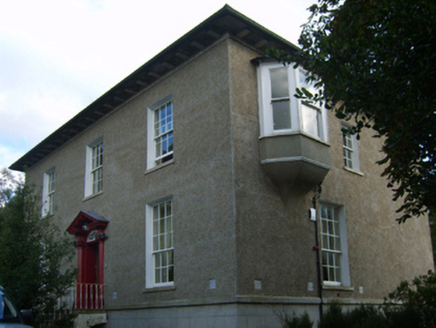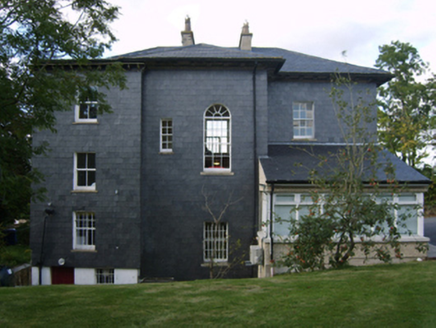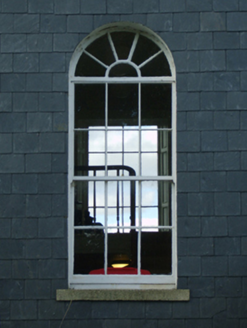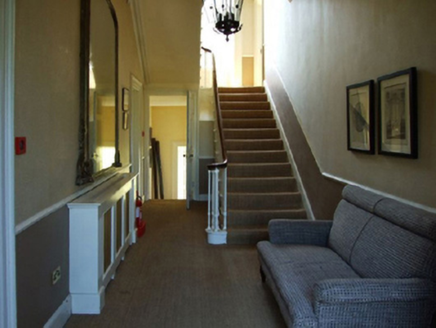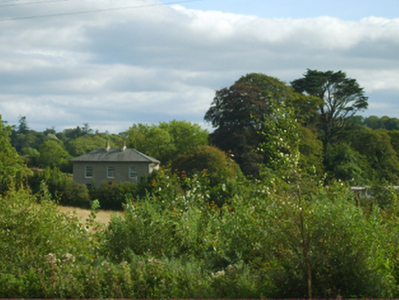Survey Data
Reg No
15703734
Rating
Regional
Categories of Special Interest
Architectural, Artistic, Historical, Social
Original Use
Farm house
In Use As
Office
Date
1842 - 1866
Coordinates
301472, 121464
Date Recorded
30/08/2007
Date Updated
--/--/--
Description
Detached three-bay two-storey over part raised basement farmhouse, extant 1866, on an F-shaped plan with single-bay (east) or two-bay (west) full-height side elevations; single-bay (single-bay deep) full-height central return (south). Occupied, 1901; 1911. Renovated, 2003, to accommodate alternative use. Replacement hipped slate roof on an F-shaped plan centred on hipped slate roof (south) with clay ridge tiles, paired rendered central chimney stacks having concrete capping supporting crested yellow terracotta tapered pots, and replacement uPVC rainwater goods on overhanging slate flagged eaves having cut-granite dentil consoles. Replacement gritdashed roughcast walls on cut-granite chamfered cushion course on cement rendered, ruled and lined base; slate hung surface finish to rear (south) elevations. Segmental-headed central door opening approached by flight of six cut-granite steps between cast-iron railings, doorcase with engaged Doric columns on plinths supporting "Cyma Recta"- or "Cyma Reversa"-detailed open bed pediment on "triglyph"-detailed "dosserets" framing timber panelled door having fanlight. Square-headed window openings with cut-granite sills, and concealed dressings framing four-over-eight (basement), twelve-over-eight (ground floor) or eight-over-eight (top floor) timber sash windows. Square-headed window openings to rear (south) elevation centred on segmental-headed window opening (half-landing), cut-granite sills, and concealed dressings framing two-over-two or six-over-six timber sash windows centred on six-over-six timber sash window having fanlight. Interior including (ground floor): central hall retaining carved timber surrounds to door openings framing timber panelled doors, moulded plasterwork cornice to ceiling, staircase on a dog leg plan with turned timber "spindle" balusters supporting carved timber banister terminating in volute, carved timber surround to window opening to half-landing framing timber panelled splayed reveals or shutters on panelled risers, carved timber surrounds to door openings to landing framing timber panelled doors with carved timber surround to window opening framing timber panelled shutters on panelled risers, and moulded plasterwork cornice to ceiling; drawing room (north-east) retaining carved timber surround to door opening framing timber panelled door with carved timber surround to window opening framing timber panelled shutters on panelled risers, cut-black marble Classical-style chimneypiece, and picture railing below plasterwork cornice to ceiling; dining room (north-west) retaining carved timber surround to door opening framing timber panelled door with carved timber surrounds to window openings framing timber panelled shutters on panelled risers, cut-veined white marble Classical-style chimneypiece, and picture railing below plasterwork cornice to ceiling; and carved timber surrounds to door openings to remainder framing timber panelled doors with carved timber surrounds to window openings framing timber panelled shutters on panelled risers. Set in landscaped grounds.
Appraisal
A farmhouse erected by Richard Leared (d. 1866) 'of Wexford and Glenville in the County of Wexford' (Calendars of Wills and Administrations 1866, 191) representing an important component of the mid nineteenth-century domestic built heritage of County Wexford with the architectural value of the composition, one rooted firmly in the prevailing late Georgian fashion, confirmed by such attributes as the deliberate alignment maximising on scenic vistas overlooking gently rolling grounds; the compact plan form centred on a Classically-detailed doorcase not only demonstrating good quality workmanship, but also showing a simplified "peacock tail" fanlight; the definition of the principal floor as a slightly elevated "piano nobile"; the diminishing in scale of the openings on each floor producing a graduated visual impression; and the monolithic stone work embellishing a slightly oversailing roofline. Having been well maintained, the elementary form and massing survive intact together with substantial quantities of the original or sympathetically replicated fabric, both to the exterior and to the interior where contemporary joinery; restrained chimneypieces; and plasterwork enrichments, all highlight the artistic potential of the composition. Furthermore, adjacent outbuildings (extant 1840) continue to contribute positively to the group and setting values of a neat self-contained ensemble having historic connections with the Leared family including Richard Hughes Leared (1832-1908), 'Corn Merchant and Farmer late of Glenville Wexford County Wexford' (Calendars of Wills and Administrations 1908, 301); John Leared (1839-1913), 'Retired Farmer' (NA 1911); and John Harvey Leared (1875-1952).

